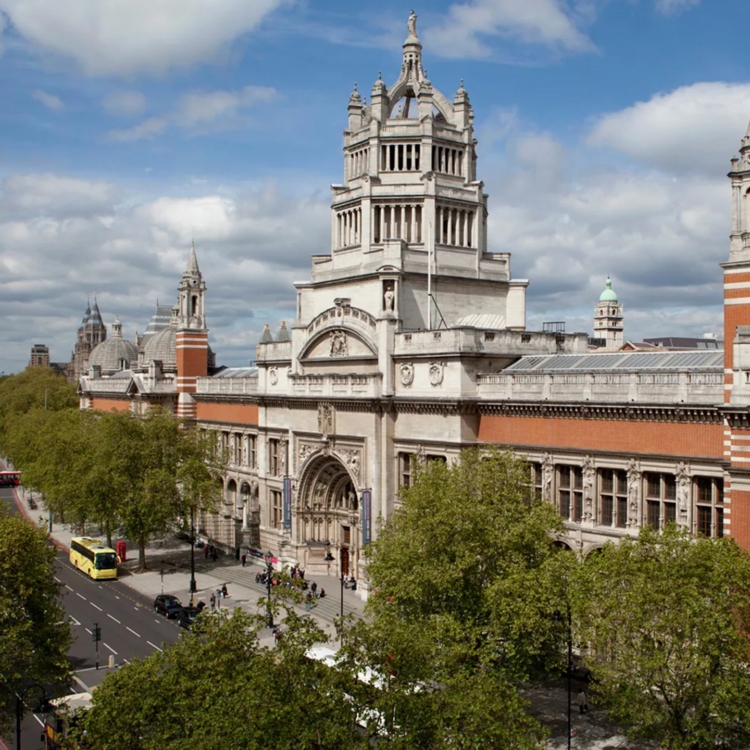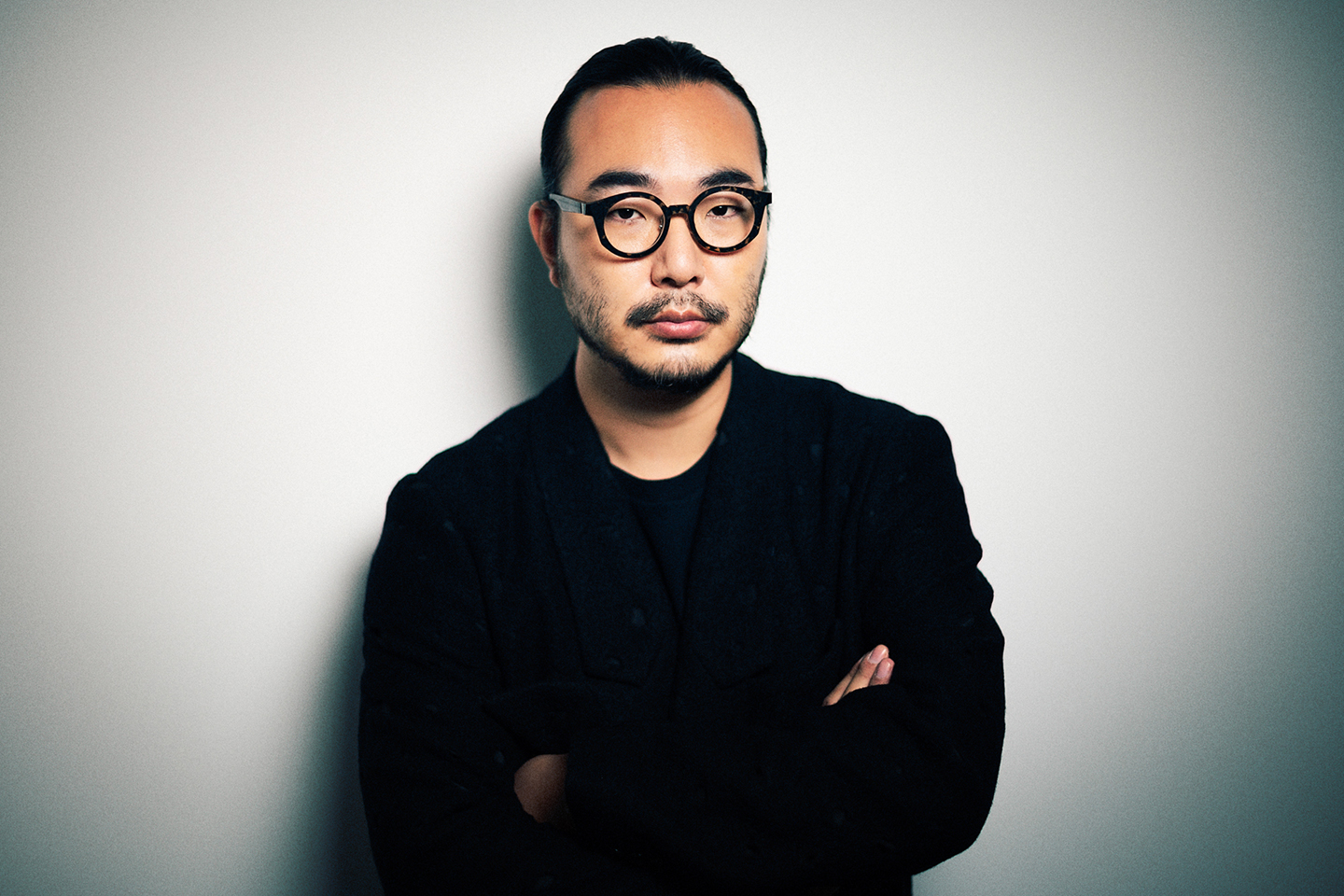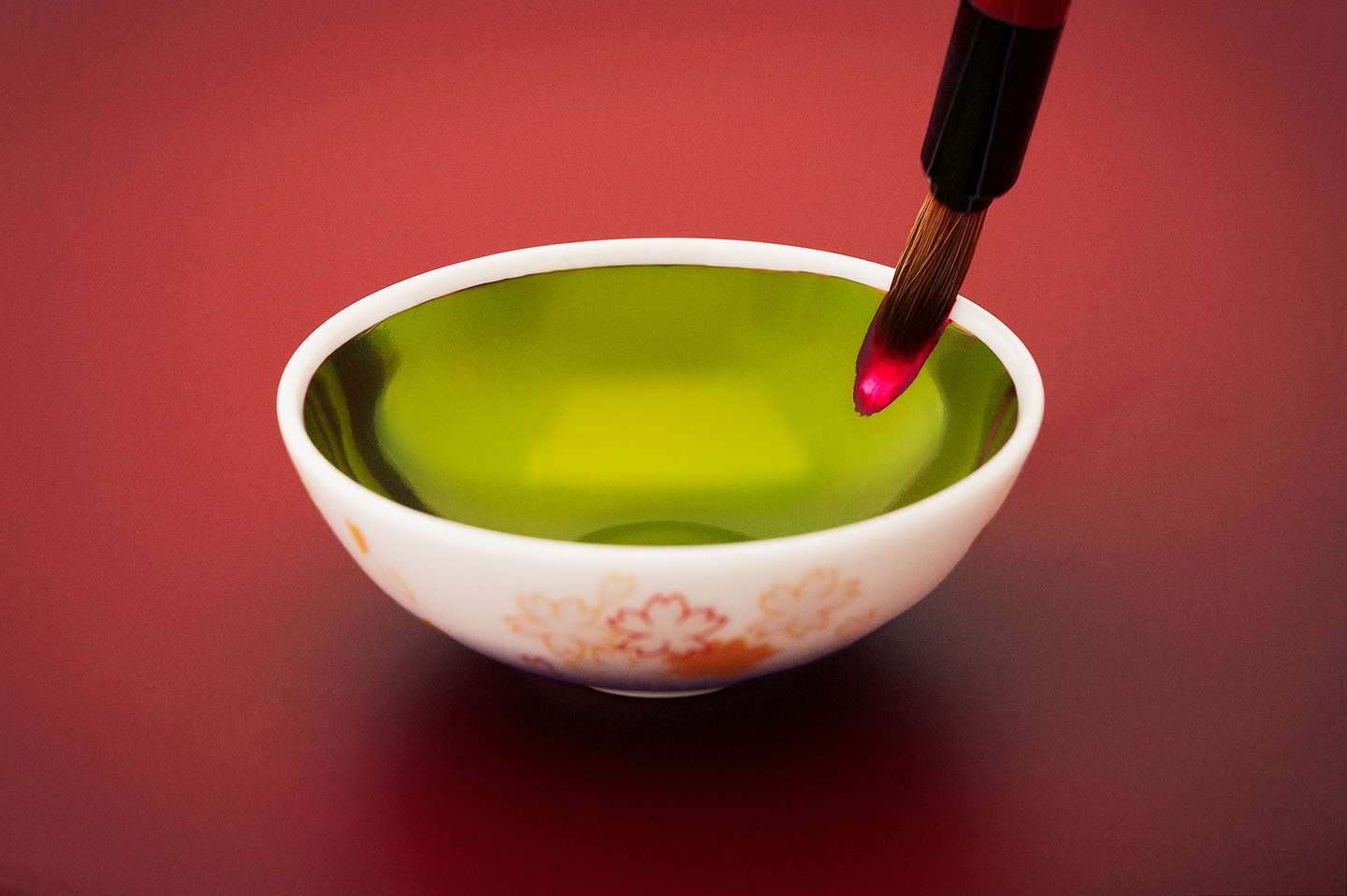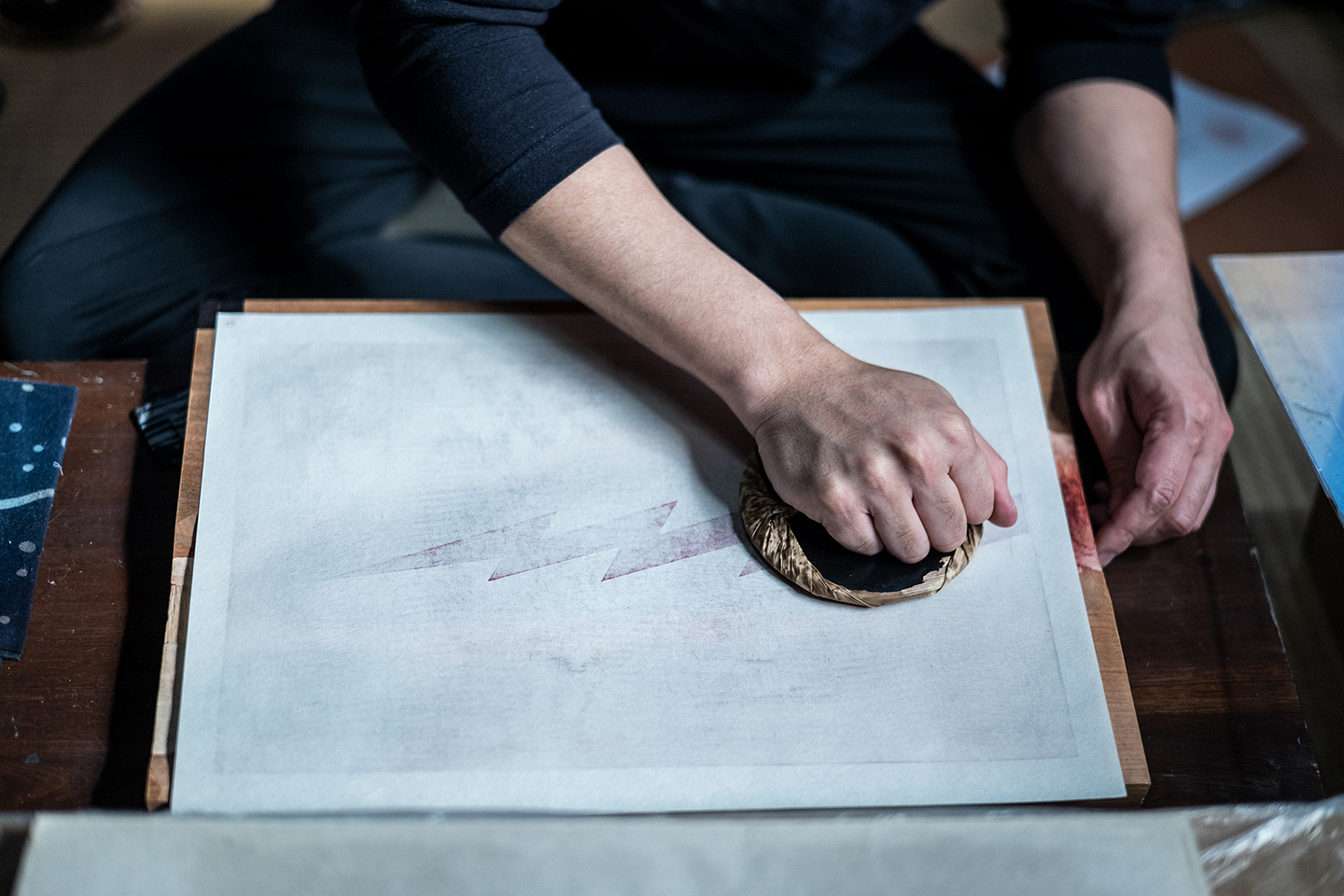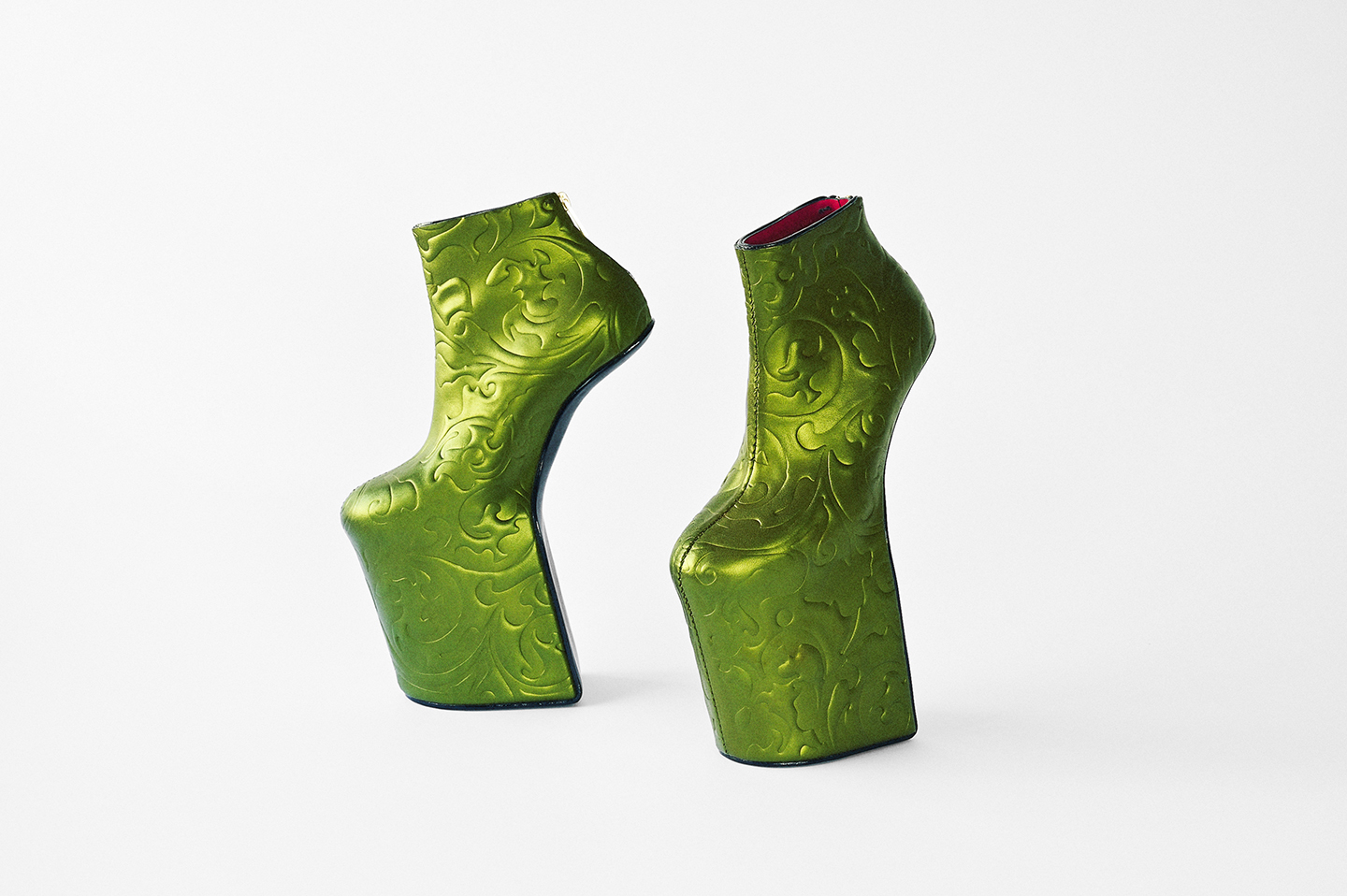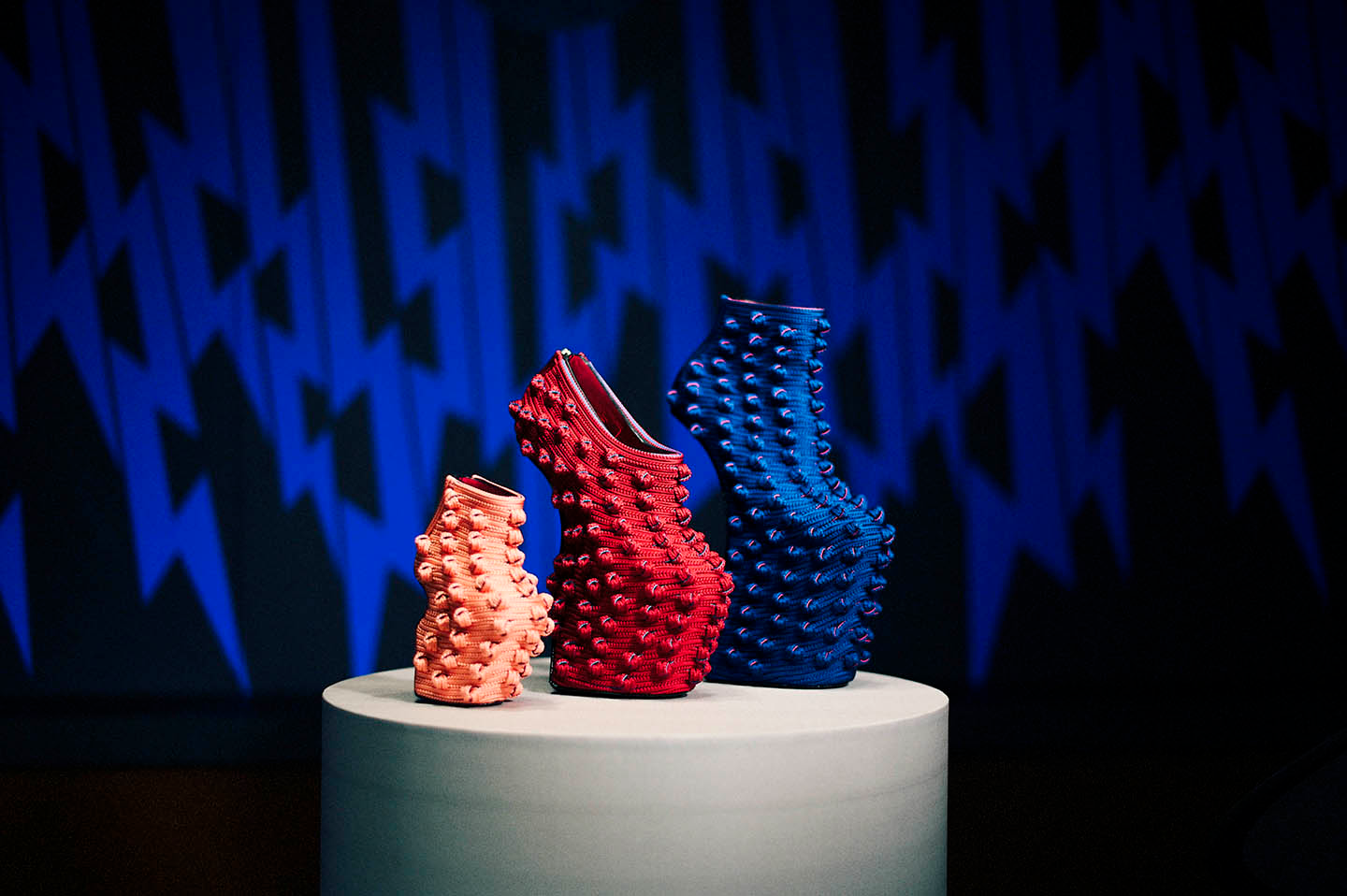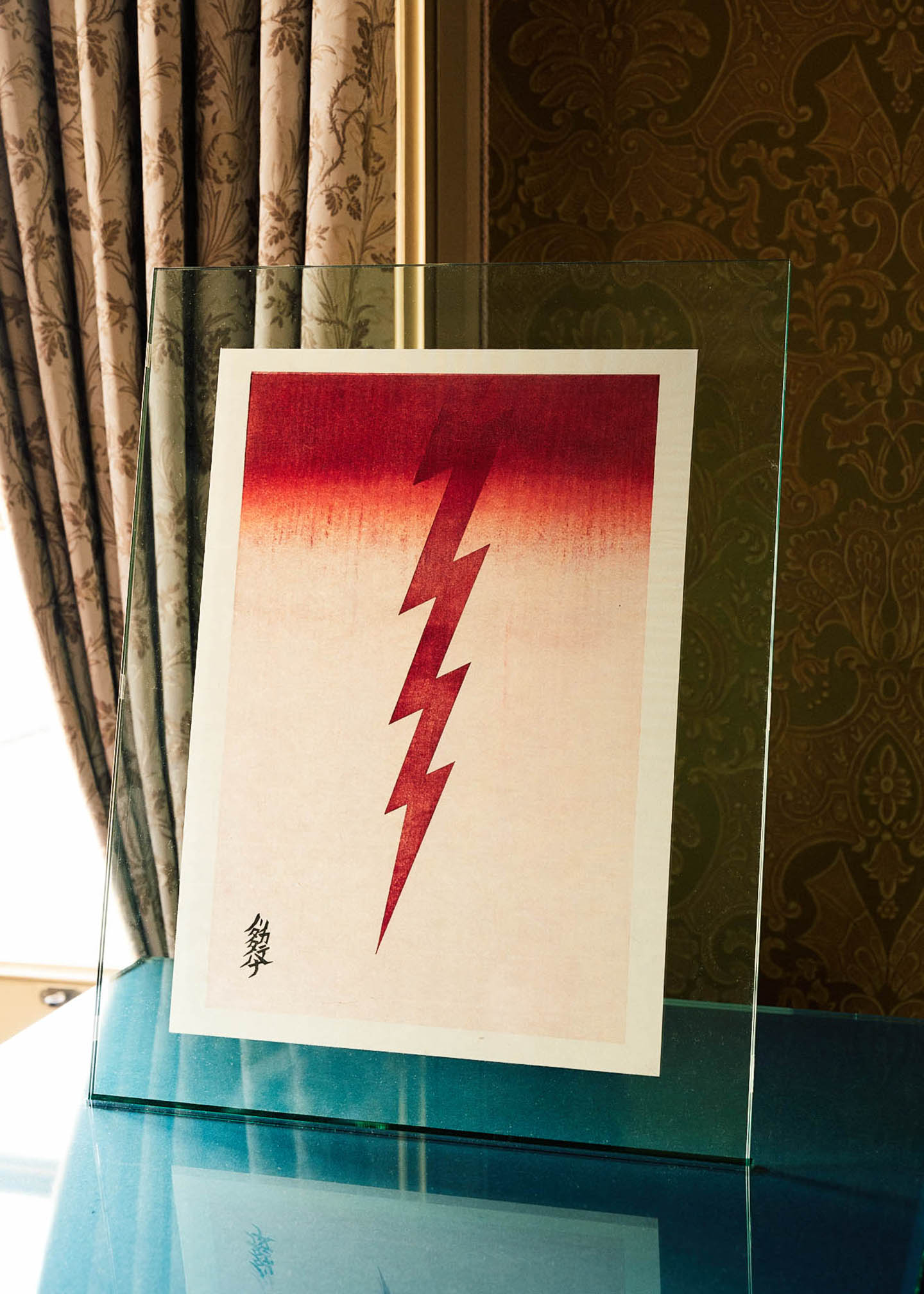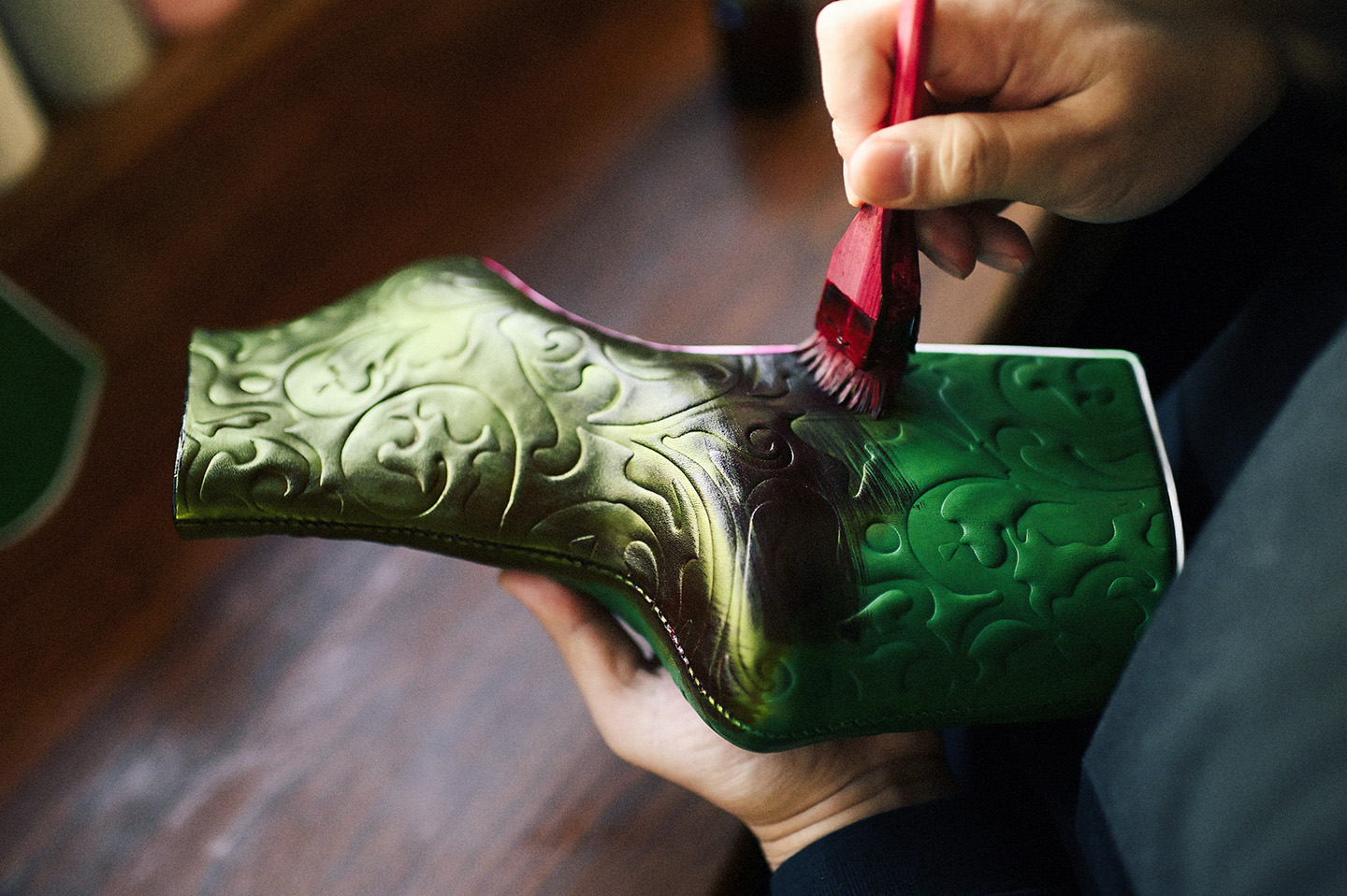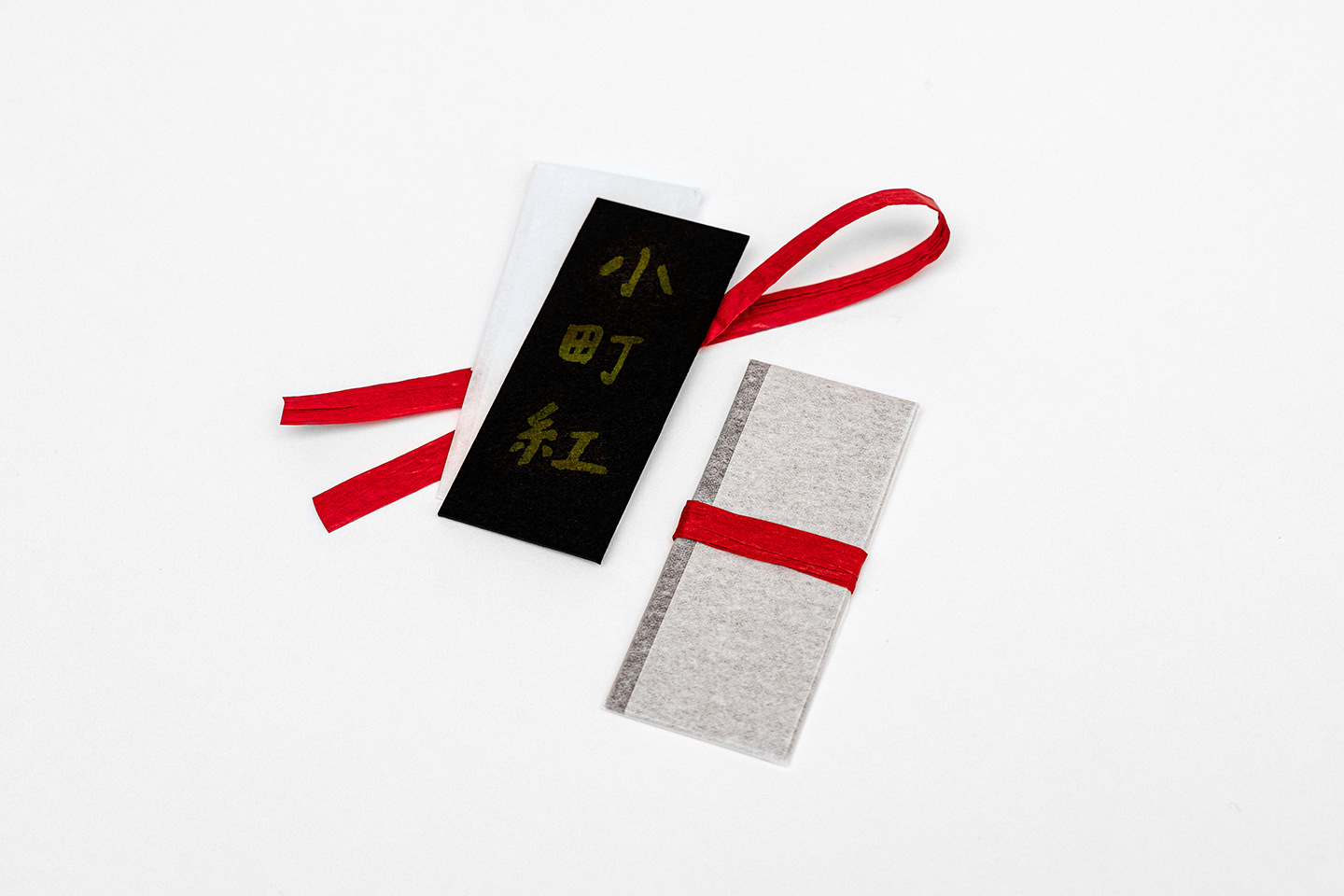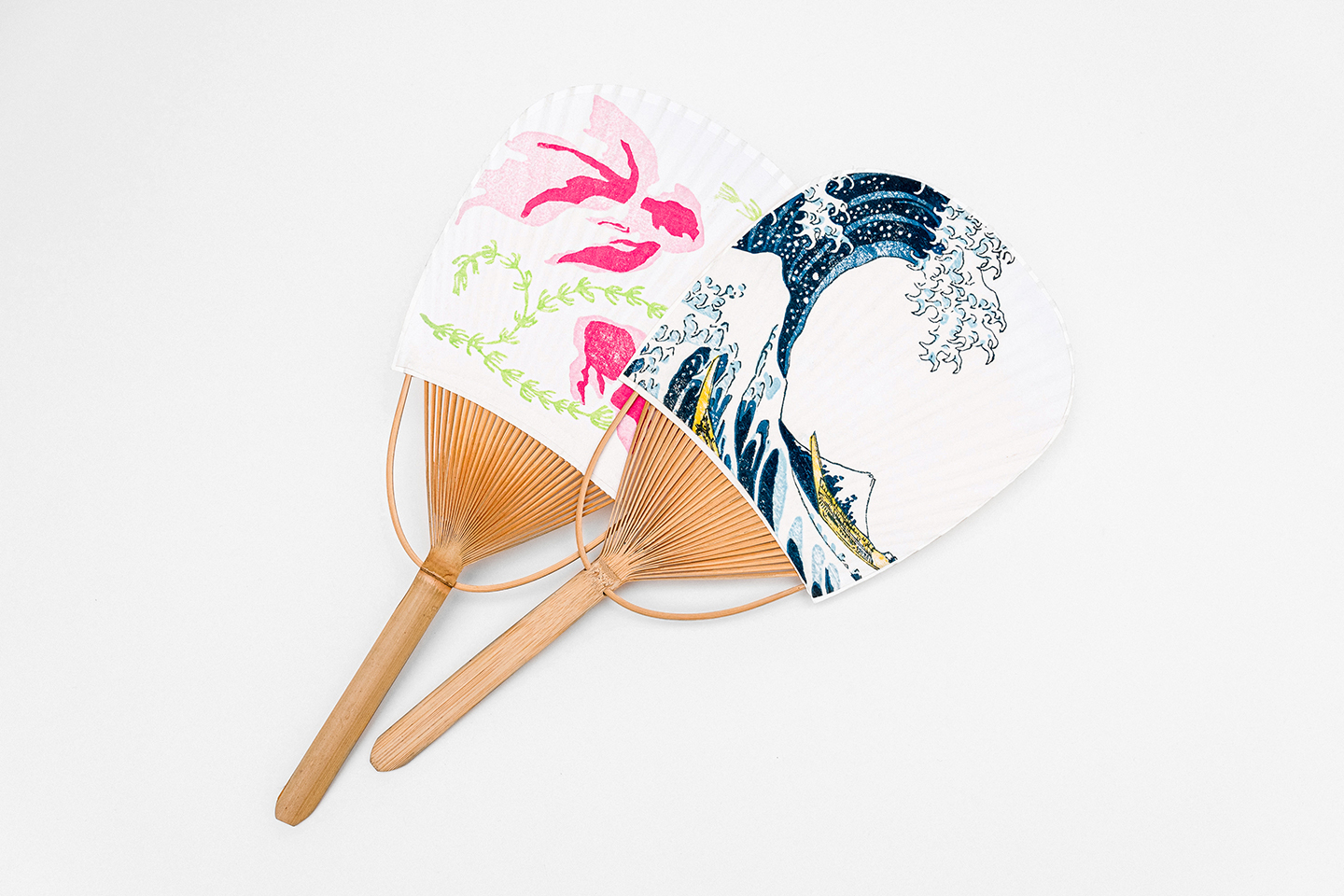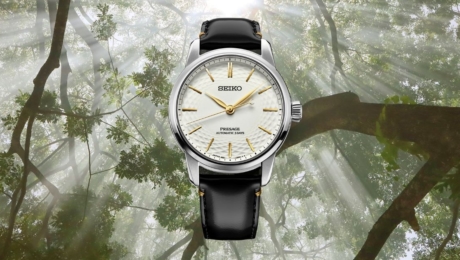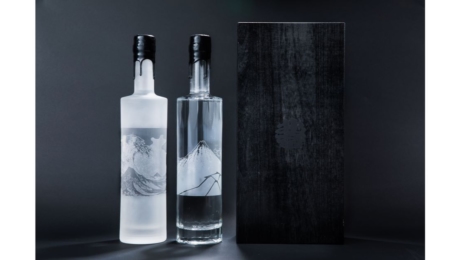■Participation Application:
Victoria and Albert Museum official website
https://www.vam.ac.uk/event/pWQ6Kg22aZ/masterclass-tokyo-craft-oct-2022
■Profiles of Artists
Contemporary artist Noritaka Tatehana
Noritaka Tatehana was born in Tokyo in 1985. He graduated from the Department of Crafts in the Tokyo University of the Arts, majoring in Textile Arts. His graduation work, “Heel-less Shoes,” were inspired by the tall wooden geta shoes of high-ranking courtesans, and are famed for being favourites of Lady Gaga. He now works as a contemporary artist, taking part in exhibitions in Japan and abroad, and dedicates himself to creating original works together with traditional craftspeople. His works are part of the permanent collections of New York’s Metropolitan Museum of Art and London’s Victoria and Albert Museum.
©︎NORITAKA TATEHANA K.K., Photo by GION
Komachi-beni Isehan Honten
Isehan Honten was founded in 1825 as a Beni (safflower) rouge manufacturer and seller. Its iridescent rouge, made using a closely guarded technique, is now the only rouge in the world still being made using the same method as during the Edo era. Isehan Honten also operates a rouge museum. As the last rouge maker, it sees part of its mission to be passing on the culture of rouge to later generations by sharing the history and customs of rouge and the history of Japanese cosmetics.
©︎Edo Tokyo Kirari Project, Photo by GION
Tokyo Kumihimo Ryukobo
Since its foundation in 1963, Ryukobo has created cords for use in Kumihimo (Japanese silk braiding) as the sole workshop in Tokyo that handles everything from dying to design and braiding. In addition to traditional Kumihimo, it has also taken the techniques and know-how passed down from past generations to take Kumihimo in new directions. In the 2019 Rugby World Cup, which was held in Japan, it created medal ribbons and commemorative sheets from pure Japanese silk, selected for its durability and elasticity.
©︎Edo Tokyo Kirari Project, Photo by GION
■Exhibition of Collaborative Works
Edo Moku-hanga Takahashi Kobo
Takahashi Kobo was established during the Ansei period (between 1854 and 1860), and continues making traditional woodblock prints to this very day. Edo woodblock prints are made by three people working together: a painter, a carver, and a woodblock printer, who layers each individual colour of the print. At Takahashi Kobo, the position of woodblock printer has been passed down from generation to generation since the workshop’s first printer, 170 years ago. It now also acts as a publisher, handling all three of these roles.
©︎Edo Tokyo Kirari Project
■Exhibition of Collaborative Works
≪Noritaka Tatehana + Komachi-beni Isehan Honten≫
One of Noritaka Tatehana’s most famous works, iridescent, Beni (safflower) rouge-dyed “Heel-less Shoes.”
©︎NORITAKA TATEHANA K.K., Photo by GION
≪Noritaka Tatehana + Tokyo Kumihimo Ryukobo≫
Heel-less shoes made with distinctive Kumihimo (Japanese silk braiding) and knots, tied using methods developed expressly for this piece.
©︎NORITAKA TATEHANA K.K., Photo by GION
≪Noritaka Tatehana + Edo Moku-hanga Takahashi Kobo≫
Woodblock prints with backgrounds made using Beni (safflower) rouge from Isehan Honten.
©︎NORITAKA TATEHANA K.K., Photo by GION
■Workshops
≪Demonstration≫
Demonstration of Beni (safflower) rouge dyeing of Heel-less Shoes by contemporary artist Noritaka Tatehana
Noritaka Tatehana will demonstrate dyeing using dye made from a type of safflower called “Namabeni” from Isehan Honten. Watch as the red dye, soaked into leather, turns iridescent the moment it is applied.
©︎NORITAKA TATEHANA K.K., Photo by GION
≪Workshop≫
Create brush-painted charms with Beni (safflower) rouge – led by komachi-beni Isehan Honten
In this workshop, participants will be able to create brush-painted charms with iridescent rouge from Isehan Honten. Use a brush to write your own name in rouge on black paper and wrap it up with paper to create a charm. You will be able to see the red rouge become iridescent before your very eyes.
©︎Edo Tokyo Kirari Project
≪Workshop≫
Create Kumihimo using a round platform and by braiding it with your fingers – led by Tokyo Kumihimo Ryukobo
Participants will be able to experience performing Kumihimo (Japanese silk braiding) by braiding with their fingers, said to be the original form of Kumihimo. By accurately interleaving cords draped over the fingers of each hand, participants will be able to create patterns in their completed Kumihimo pieces. There will also be a demonstration of Kumihimo using a round platform, a distinctive feature of Edo-Tokyo Kumihimo.
©︎Edo Tokyo Kirari Project
≪Workshop≫
Create woodblock prints – led by Edo Moku-hanga Takahashi Kobo
Participants will be able to experience woodblock printing by printing Katsushika Hokusai’s The Great Wave off Kanagawa, part of the Thirty-six Views of Mount Fuji series, and a print of a goldfish, considered an auspicious print that wards off evil. Use a printing tool called a Baren tool to make an authentic wooden print. You can apply the completed print to a fan or put it in a frame for show.
©︎Edo Tokyo Kirari Project
* Participants will be able to keep the pieces they make in workshops.
■About the Victoria and Albert Museum
The V&A is a world’s leading museum of art and design, housing a permanent collection of over 2.8 million objects, books and archives that span over 5,000 years of human creativity. The Museum houses some of the world’s greatest resources for the study of architecture, sculpture, paintings, photography, prints, furniture, fashion, textiles, metalwork, jewellery, ceramics, glass, theatre and performance. The collections are global and include internationally renowned holdings of Asian art and design, including from Japan.
■ About the Edo Tokyo Kirari Project
This project is dedicated to polishing Tokyo’s “treasures” — the traditional techniques of Edo-era Tokyo and the products of veteran shops — and sharing their value and allure with the world.
Led by the concept of “Old meets New,” the project selects model craftspeople in the fields of fashion, food, and living to take on the challenge of using traditional techniques and skills in new and innovative ways. These craftspeople apply new perspectives, refining the traditional techniques and products of Edo-Tokyo and providing them with even greater value. The allure and appeal of their creations are shared through social media and promotional activities in Japan and abroad. Through these initiatives, we seek to further increase the allure of Tokyo’s traditional industries, contribute to their sustainability, and ensure that they are passed on to later generations.

